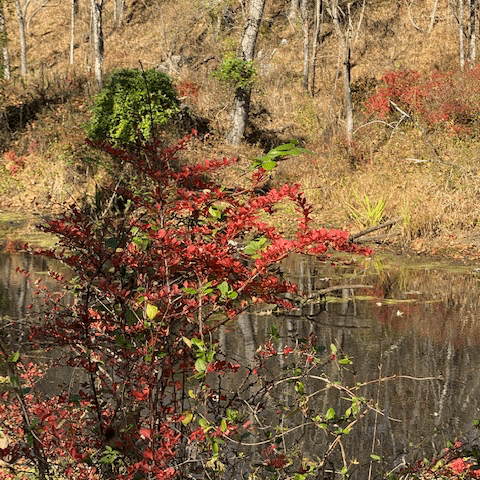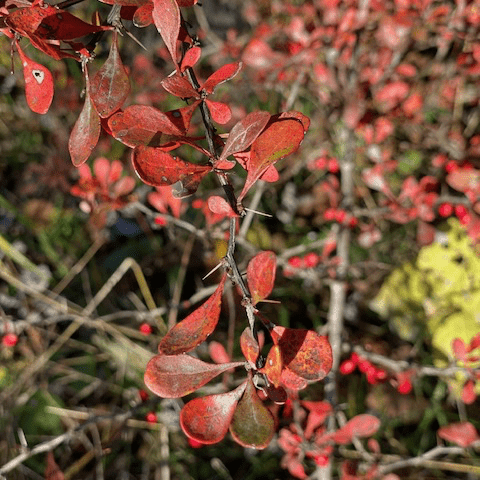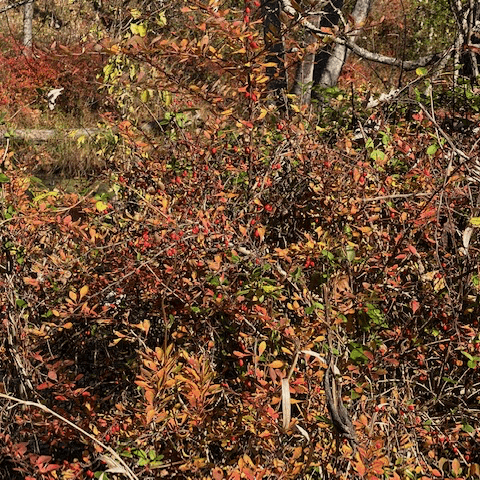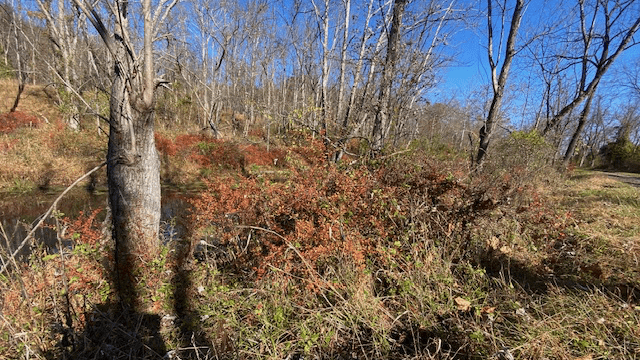Japanese Barberry or, Berberis thunbergii, is native to Japan and the eastern part of Asia. In the fall, it is beautiful. It turns a bright crimson red, Unfortunately, it’s highly invasive. I saw these on the C & O Canal trail. At first, I thought it was burning bush, which is another invasive species. However, I was wrong. These are Japanese Barberry, which could be worse than burning bush. Read on to find out why they are so detrimental.
Japanese Barberry Identification
Characteristics of the leaves. The leaves are tear drop shaped. They are also opposite on the stem. The texture is slightly leathery, and they are a light green during the summer. In a nursery, the leaves can be a variety of colors. In the wild, they usually revert back to a similar green color. In the fall, they turn a bright crimson red. The oval shaped berries also turn bright crimson red. They are very pretty in the fall. I guess that is the allure for a landscape plant.
Propagation and Growth Patterns
The growth pattern is slightly similar to a bramble / or thicket. Like lots of bramble, they are thorny. They are low growing and grow from a central stem. There are three ways that they propagate. First, similar to stinging nettle, they grow rhizomes. Second distributed berries seed and grow new plants. Finally, if a branch touches the ground, it can also root. This gives the plant multiple ways to propagate, and it forms large patches of plant.
Offense is Great Defense
Because of the thorns and the thicket type growth patterns, grazing animals don’t eat Japanese Barberry. As a result, it grows uncontrolled. Another downside is that the thicket is a great home for several species of rodents. These rodents can carry lots of ticks. Consequently, there are usually lots of ticks around thickets of Japanese Barberry.
Watch this video to learn more.



